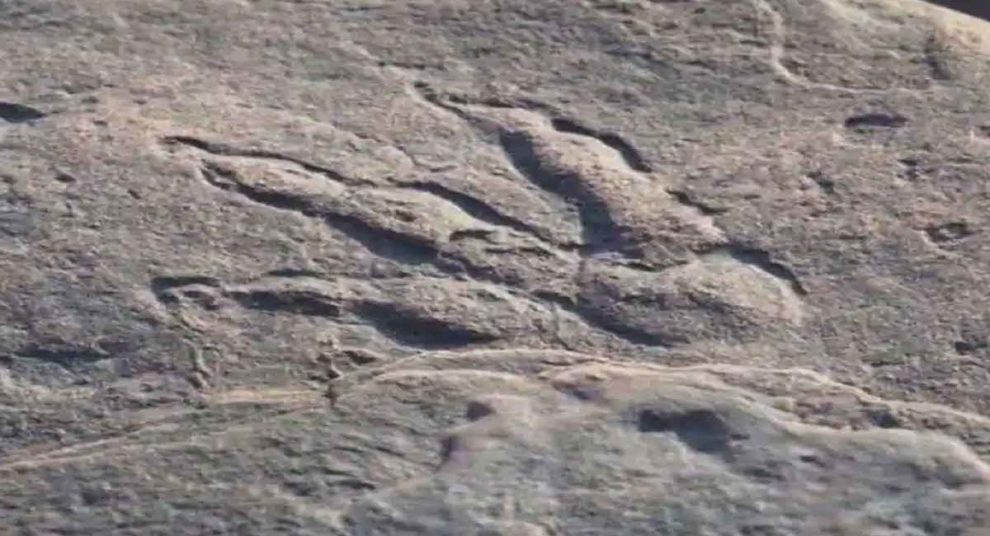Footprints from at least six different species of dinosaurs, the last dinosaurs to walk on British soil 110 million years ago, have been discovered in Kent, according to a new report.
The discovery of dinosaur footprints by a curator from Hastings Museum and Art Gallery and a scientist from the University of Portsmouth is Britain’s final record of dinosaurs.
The footprints were discovered within the cliffs and on the foreshore of Folkestone, Kent, where stormy conditions affect the cliff and coastal waters, revealing new fossils on a regular basis.
“This is the first time dinosaur footprints have been found in strata known as the ‘Folkestone Formation,’ and it’s quite an extraordinary discovery because these dinosaurs would be the last to roam this country before becoming extinct,” said David Martill, a professor of palaeobiology.
“They were walking around near where the White Cliffs of Dover are now — imagine that the next time you’re on a ferry and see those magnificent cliffs!”
Footprint fossils are formed when sediment fills the impression left behind when a dinosaur’s foot pushes into the ground, preserving it.
The footprints are from a variety of dinosaurs, indicating that southern England had a relatively high diversity of dinosaurs at the end of the first cretaceous period, 110 million years ago.
They are thought to be descended from ankylosaurs, tough-looking armoured dinosaurs that looked like living tanks; theropods, three-toed flesh-eating dinosaurs similar to Tyrannosaurus rex; and ornithopods, plant-eating ‘bird-hipped dinosaurs’ so-called because their pelvic structure resembled that of birds.
The paper’s lead author is Philip Hadland, Collections and Engagement Curator at the Hastings Museum and Art Gallery. “Back in 2011, I discovered unusual impressions within the rock formation at Folkestone,” he explained. They appeared to be repeating, and all I could think of was footprints.
“This contradicted what most geologists said about the rocks here, but I went looking for more footprints and found even better ones because the tides revealed more by erosion. More research was required to persuade the scientific community of their validity, so I collaborated with experts at the University of Portsmouth to validate what I’d discovered.”
The majority of the discoveries are isolated footprints, but one discovery includes six footprints, forming a ‘trackway,’ which is essentially one consecutive print from the same animal.
This trackway of prints is similar in size to an elephant footprint and is thought to be an Ornithopodichnus, which has similar, but smaller-sized footprints found in China around the same time.
The largest footprint discovered, measuring 80 cm wide and 65 cm long, was identified as belonging to an Iguanodon-like dinosaur. Iguanodons were plant-eaters that could grow to be 10 metres long and walk on two legs or all fours.
“To find such an array of species in one place is fascinating,” Professor Martill said. “These dinosaurs probably took advantage of the tidal exposures on coastal foreshores, perhaps foraging for food or taking advantage of clear migration routes.”
This part of Kent, and indeed much of the UK, was beneath a shallow sea during the late Cretaceous period, but this study shows unequivocally that the Folkestone Formation was inter-tidal.
“Aside from discovering that dinosaurs visited the seaside in the same way that their modern relatives the birds do, we’ve also discovered new evidence that changes the interpretation of the geology of the Folkestone Formation strata,” Mr. Hadland said.
“It just goes to show that what has previously been published about a region’s geology isn’t always correct, and new discoveries are frequently made. There is also the possibility for nearly anyone to make a discovery that contributes to scientific knowledge from publicly accessible geological sites.”
